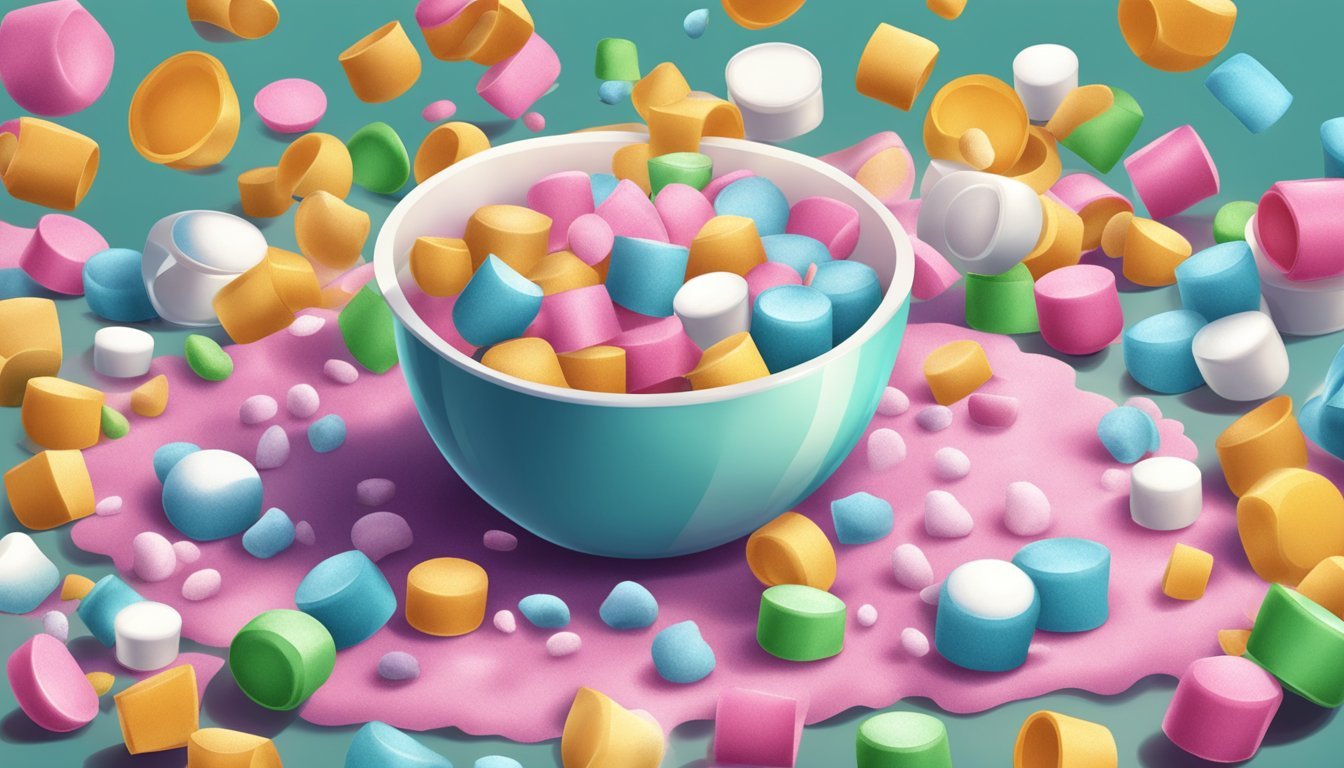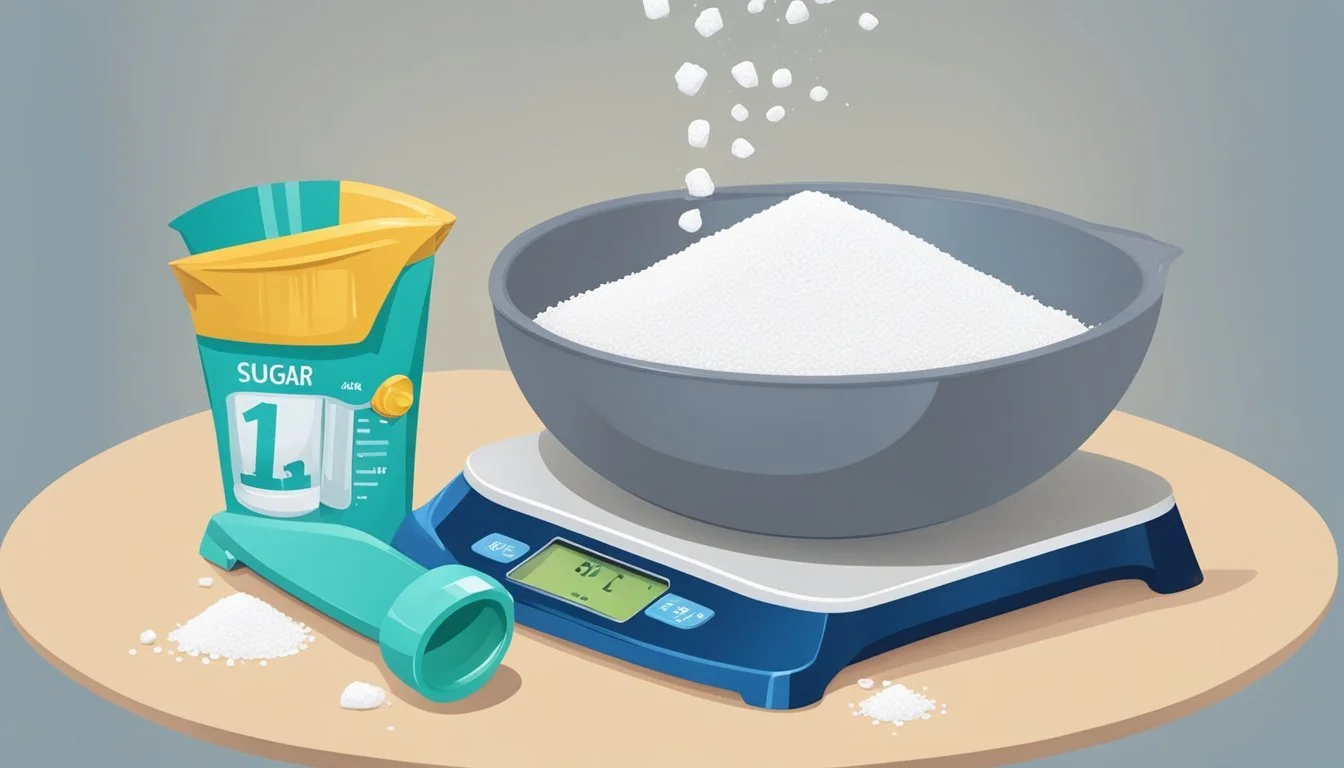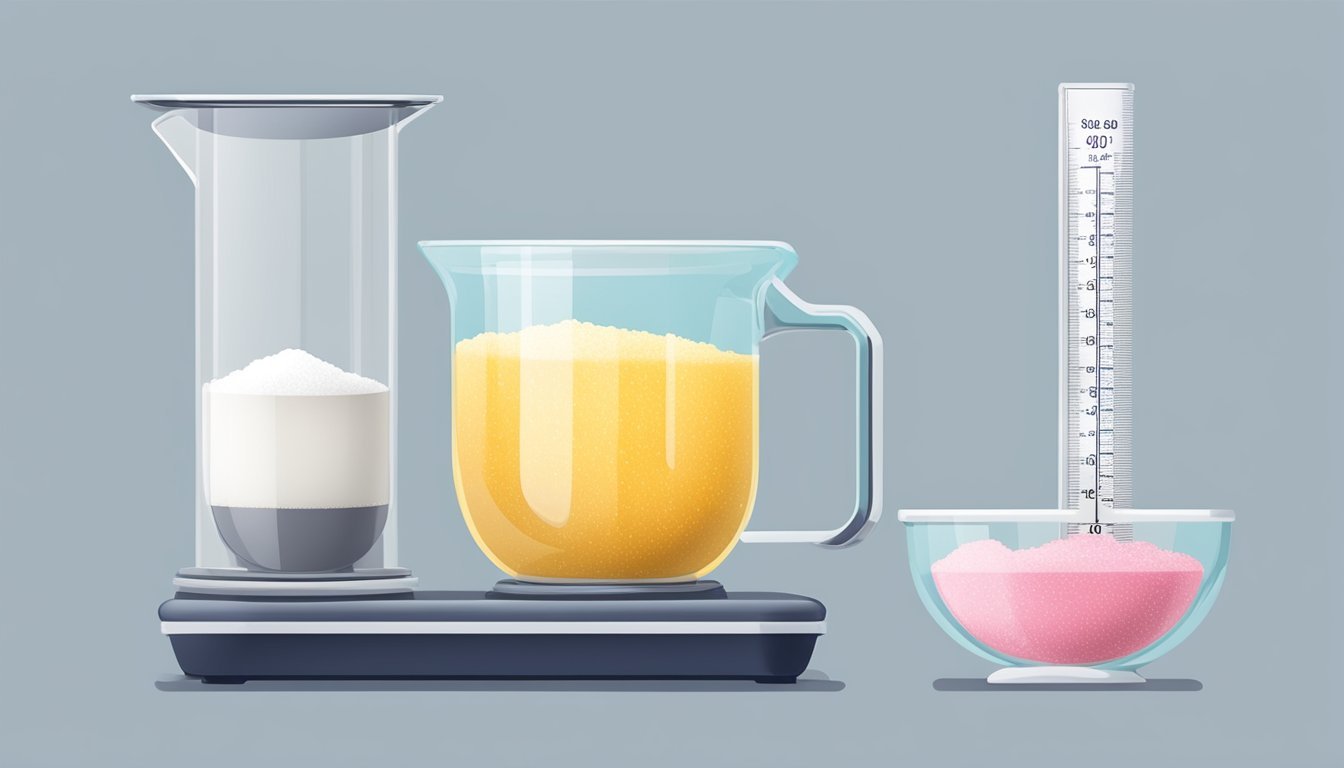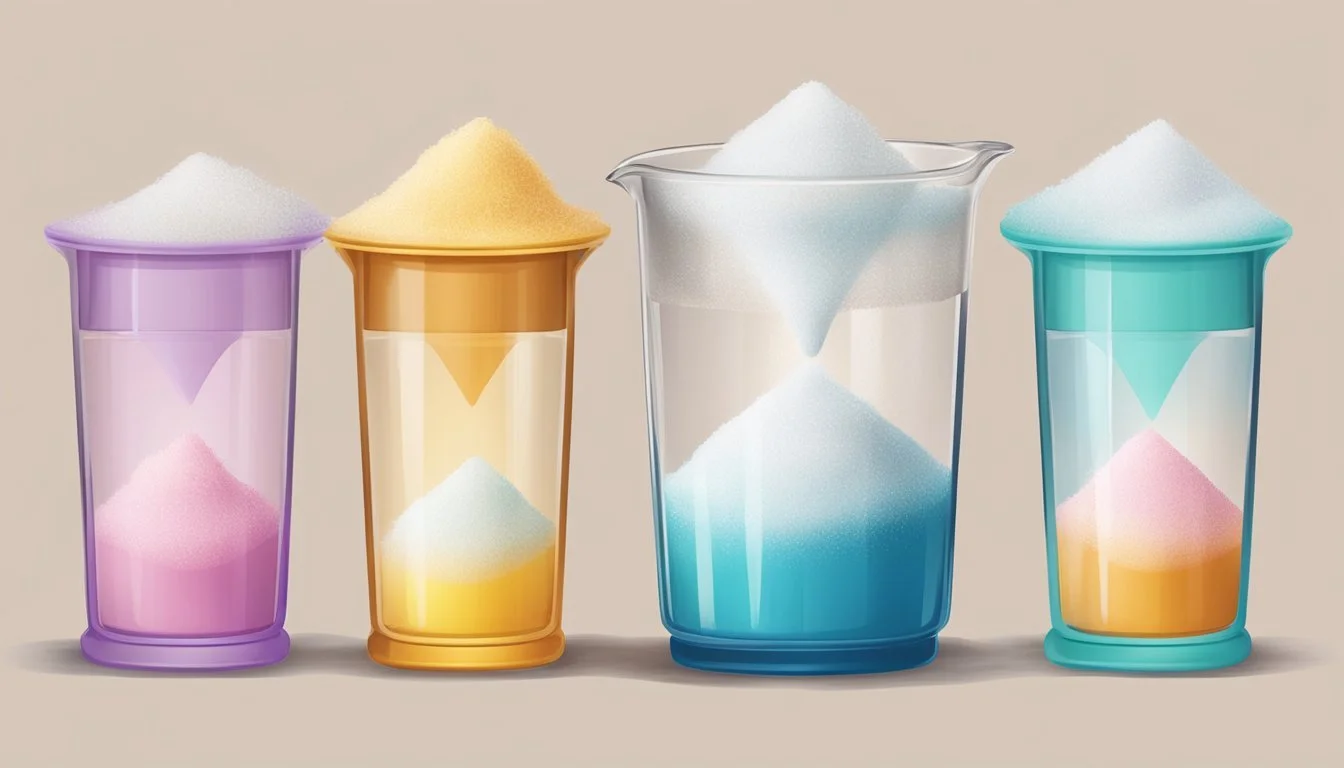How Many Cups in a Pound of Sugar?
The Definitive Measurement Guide
Determining the conversion of sugar from pounds to cups is essential for both home cooks and professional chefs, ensuring accuracy in recipes and ingredient measurements. The distinction between weight and volume in the culinary context is crucial as it affects the outcome of the dish. A pound, as a unit of weight, measures the mass of the sugar, whereas a cup, as a unit of volume, assesses the space it occupies. This difference implies that the cup measurement will vary depending on the type of sugar and its density.
Granulated sugar, commonly used in a wide array of recipes, is more compact than powdered sugar. Thus, one pound of granulated sugar equates to approximately 2 ¼ cups. Powdered sugar, known for its airy and fluffy texture, yields more cups per pound because of its lower density. A pound of powdered sugar typically measures around 3 ¾ to 4 cups. Brown sugar, which can be packed, adds another variable to consider due to the air pockets that can occur when measuring it in its loose state versus when it is firmly packed.
For recipes that call for firm packing, a pound of brown sugar equals roughly 2 ⅓ cups. However, the method of packing can impact the volume, highlighting the importance of following recipe instructions for accuracy. Raw cane sugar, which has larger crystals and a different texture, measures around 2 cups per pound. As these numbers indicate, the volume per pound can differ considerably, which is why precise measurement is fundamental in ensuring the successful execution of a recipe.
Understanding Weight and Volume
When it comes to baking and cooking, understanding the relationship between weight and volume is paramount. The precise measurements ensure the success of a recipe, especially when dealing with ingredients such as sugar, which can vary significantly in volume.
The Difference Between Weight and Volume
Weight refers to the mass of an ingredient, typically measured in units such as ounces or pounds. Volume, on the other hand, measures the space that an ingredient occupies, commonly in units like US cups or milliliters. One pound of sugar represents a unit of weight, while a cup refers to a unit of volume. These two different types of measurement can lead to different results in a recipe if not properly converted or understood.
Measuring by Weight for Baking Accuracy
For baking, accuracy is critical, which is why many professionals recommend measuring ingredients by weight using a kitchen scale. A scale measures the true amount of an ingredient, unaffected by external factors such as compaction or air content. For instance, a pound of granulated sugar offers a consistent weight and can easily be converted to the equivalent volume, which is roughly 2 ¼ cups according to standard US measurements.
When to Use Volume Measurements
Volume measurements, made with measuring cups, are common in household kitchens. While not as precise as weight, volume measurements can be quicker and more convenient for liquid ingredients. However, for dry ingredients like sugar, the volume can vary—packed brown sugar may occupy less space than loose brown sugar. Typically, granulated and powdered sugars are measured in volume when the recipe does not demand strict precision, with 1 pound of these sugars converting to approximately 2 ¼ and 3 ¾ US cups, respectively.
Remember, while a kitchen scale provides the most accuracy, especially for ingredients with varying density like brown sugar, using measuring cups can suffice for recipes that are more forgiving or where precision is not as crucial.
Types of Sugar and Their Impact on Measurement
The quantity of sugar measured in cups can vary significantly depending on its type and texture. It is crucial for users to know exactly how many cups are in one pound of different sugar types to ensure accuracy in recipes.
Granulated Sugar
Granulated sugar, also known as table sugar, is the most common type used in baking. One pound of granulated sugar is equivalent to approximately 2 cups. This type of sugar has fine, medium-sized crystals and does not compact easily, providing a consistent measurement.
Powdered Sugar
Powdered sugar, or confectioners' sugar, is granulated sugar that has been ground into a fine powder and often contains an anti-caking agent like cornstarch. In one pound of powdered sugar, there are generally about 4 cups when sifted. Powdered sugar occupies more volume than granulated sugar due to its airy composition.
Brown Sugar
Brown sugar differs from white sugar due to the presence of molasses, which affects its moisture content and density. For brown sugar, one pound can yield approximately 2 1/4 cups when lightly packed, and around 2 1/3 cups when firmly packed. This variance underscores the importance of packing brown sugar as per recipe instructions for accurate measurement.
Alternative Sugars
Alternative sugars, such as raw cane sugar, have different textures and levels of moisture, which can impact how they measure up. Typically, one pound of raw cane sugar will amount to around 2 cups. Since alternative sugars vary widely, users should refer to specific guidelines for each type when measuring by volume.
Converting Pounds to Cups for Different Sugars
When converting pounds to cups for sugar, the key point to remember is that the volume measurement in cups can vary depending on the type of sugar. Each sugar has a different density, which affects how many cups are in a pound.
Converting Granulated Sugar
For granulated sugar, 1 pound is equivalent to approximately 2.25 cups. This measurement is applicable for most recipes that use granulated sugar.
1 lb granulated sugar = 2.25 cups
Converting Powdered Sugar
Powdered sugar is lighter and less dense than granulated sugar. Therefore, 1 pound of powdered sugar yields more in volume, equating to about 3.75 cups (unsifted).
1 lb powdered sugar = 3.75 cups
Converting Brown Sugar
Brown sugar typically has more moisture and is denser, which results in a different conversion. For brown sugar, 1 pound equals approximately 2.33 cups when packed firmly.
1 lb brown sugar = 2.33 cups
Sugar Conversion Table
Here's a simple reference table for converting pounds of sugar to cups:
Type of Sugar Pounds (lbs) Cups Granulated Sugar 1 lb 2.25 cups Powdered Sugar 1 lb 3.75 cups Brown Sugar 1 lb 2.33 cups
This table can serve as a guide for converting sugar from weight to volume for various recipes.
Measurement Techniques for Accuracy
Accurate measurement is crucial in cooking and baking, as even slight deviations can affect the final product. Proper technique and equipment ensure that a recipe's prescribed sweetness is achieved consistently.
How to Measure Sugar Accurately
Measuring sugar accurately often begins with the correct selection of tools. Spoon measurements should be used for smaller quantities, and a standard measuring cup—rather than a drinking cup—should be used for larger ones. When a recipe calls for a cup of sugar, the type of sugar and its preparation need to be considered:
Packed sugar refers to brown sugar that is compressed into a measuring cup until no air remains.
Unsifted sugar is scooped up directly from the container, which may include clumps and could lead to over-measuring.
Sifted sugar signifies that the sugar should be sifted to a fluffier texture before measuring and is lighter than its unsifted counterpart.
Loose sugar assumes a gentle spooning of the sugar into the measuring cup without pressing down.
For a tablespoon of sugar, a measuring spoon should be filled and leveled off for an accurate measurement.
The Role of a Kitchen Scale
A kitchen scale significantly enhances accuracy by measuring the weight of the sugar instead of the volume. This method prevails in accuracy because it is impervious to variations caused by air or compaction. For example, one pound of sugar is approximately 2.27 cups. This conversion is consistent regardless of whether the sugar is loose or packed. By measuring sugar by weight, one ensures consistency across all batches of a recipe.
Tips for Measuring Different Types of Sugar
Different sugar types may require distinct measuring techniques. Here are tips tailored for each:
Granulated Sugar: It can be measured using the scoop-and-sweep method, where the excess sugar is swept off the top for a level cup.
Powdered Sugar: It should often be sifted before measuring to break up lumps and provide a light, airy cup.
Brown Sugar: Unless stated otherwise, brown sugar should be packed into the measuring cup to ensure it holds its shape when removed.
While each type of sugar has its specificities, using the correct measuring tools and methods will always be foundational to achieving accuracy in measurement.
Implications for Recipes and Baking
Understanding the conversion from pounds to cups of sugar is crucial for anyone looking to achieve precise and consistent outcomes in baking. Proper measurements ensure that recipes are replicated accurately every time.
Consistency in Baking
Baking is an exact science; even slight deviations in the amount of an ingredient like sugar can yield vastly different results. For instance, a recipe requiring 1 pound of granulated sugar should use approximately 2.25 cups. Having a reference for conversions ensures that baked goods turn out the same with each attempt, maintaining flavor and texture as expected.
Importance of Measurement in Recipes
Recipes are formulas that rely on the correct balance of ingredients. When a recipe calls for a pound of sugar, knowing that it equates to roughly 2.25 cups of granulated sugar or about 3.75 cups of powdered sugar (due to its lower density and increased lightness) is essential. Accurate measurements are the backbone of reliable and delicious baking.
Adjusting Recipes for Different Sugar Types
Each type of sugar has a unique density, which affects how it should be measured:
Granulated Sugar: Generally,
1 poundequals~2.25 cups.Powdered Sugar: Lighter and fluffier, requiring
~3.75 cupsfor1 pound.Cake Flour: Affects the volume, with
1 poundamounting to~4 cups.
When substituting one sugar type for another in any recipe, it's important to use the correct volume for proper sweetness and to achieve the intended texture.
Reference Materials and Tools
When it comes to accurately converting pounds of sugar to cups, it is essential to use reliable reference materials and precise measuring tools. This ensures that measurements are consistent and recipes turn out as intended.
Conversion Charts and Formulas
For a confident and accurate conversion, one should refer to conversion charts that consider the specific type of sugar being measured. Granulated sugar, for example, typically translates to 2 ¼ cups per pound. In comparison, a pound of raw cane sugar is approximately 2 cups. These conversions are important, especially when dealing with recipes that call for precise sugar measurements.
Table: Sugar Conversion Chart
Type of Sugar Cups in One Pound Granulated Sugar ~2 ¼ cups Raw Cane Sugar ~2 cups Powdered Sugar (Unsifted) ~3 ¾ cups Brown Sugar (Firmly Packed) ~2 ⅓ cups
Formulas can also be vital, particularly when converting in bulk, e.g., using a 4 lb bag of sugar. The formula for such conversions generally follows cups = pounds × conversion factor. The use of the metric system may involve converting pounds into grams, with one pound equalling approximately 453.592 grams.
Selecting the Right Measuring Tools
Ensuring measurement accuracy requires the right measuring tools. One should always use standard measuring cups, with clear distinctions between wet and dry measures. The measuring cup should be appropriate for the sugar's density; for example, a cup designed for granulated sugar may not be suitable for measuring a finer powder, such as powdered sugar.
Having a kitchen scale is also beneficial, as it can provide precise weight measurements, which is particularly crucial when converting weights to volumes for substances like butter, where a pound equates to roughly 2 cups. Unlike volume measurements, which can vary due to the sugar's compaction, weight measurements offer accuracy that can contribute to the consistency and success of a recipe.






